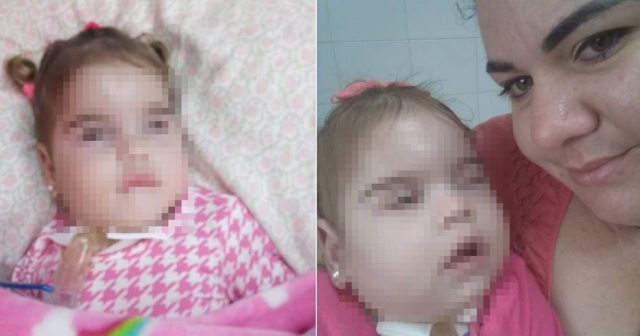He increase in hepatitis A cases in the Reina district, in the city of Cienfuegos, set off alarms two weeks ago and forced the authorities to implement epidemiological surveillance measures in response to the health alert.
The doctor Livan Rojas Lantigua, director of health management of the General Directorate of Health in Cienfuegos, reported in a press conference that “The majority of cases are concentrated in four blocks of that district, where they carry out a focus control of the disease, which has an incubation period which ranges between 15 and 50 days," indicated a note on the local channel's website. Perlavision.
As Rojas explained, the Reina Health Area carries out actions in the community “to increase the perception of risk of contracting the virus” and “a temporary work group was activated, which meets daily with the participation of the municipal government, management general health, the Provincial Center for Hygiene, Epidemiology and Microbiology (CPHEM) and other organizations and institutions linked to basic services to the population.
And television report revealed this Monday that the first case of hepatitis A was diagnosed in office 3, belonging to the José Luis Chaviano polyclinic, in the populous neighborhood, located in the western part of the city. The report did not give details about the evolution of the patient's health, nor his age and sex..
According to the information, for 15 days “health actions have been reinforced to prevent the spread of the virus,” but it does not mention that there has been an increase in cases nor does it specify the total number of cases. people infected with hepatitis.
Perlavision ensures that More than 5,000 residents of Reina communities have been harmed by the “epidemiological situation” and, although the “focus control” to detect the virus, health personnel continue to carry out investigations in homes, “to maintain health surveillance.”
The director of the Municipal Hygiene and Epidemiology Unit, whose name was not revealed, explained to the television channel the actions carried out by health personnel to face the hepatitis outbreak.
He assured that “the epidemiological history is taken of 100% of the contacts (of a patient)”, both inside the home and outside it, that is, “to the family members and all the people who had links to the case.”
“We treat patients symptomatically, depending on the symptoms of the disease that appear, and we proceed to perform complementary transaminase tests,” he stated.
According to the doctor, “the clinic staff carries out strict daily monitoring of these patients, with home admission” and recalled that viral hepatitis type A is a disease that is spread through the fecal-oral route, by ingesting contaminated water or food, or by direct contact with an infected person.
“Every food you eat must be decontaminated, in addition to adopting general measures with water, which should be chlorinated,” he recommended, among other preventive measures.
The board assured that 0.1% hypochlorite is for sale in local pharmacies and that “the entire community has access to buying it” to avoid contagion.
For two weeks, the municipal Aqueduct and Sewer and Community Services companies of the city of Cienfuegos have intensified in the Reina district “the collection of garbage and elimination of micro-landfills, the repair of leaks and obstructions in the hydraulic networks, and installed a hypochlorinator, treatment equipment for chlorination and disinfection of water.”
An official interviewed, who was also not identified, complained that during the cleaning of the neighborhood's sewer manholes the most unimaginable objects were found blocking the drains, among which he mentioned bones, stoves and bicycle tires.
According to him, “what affects us is the social indiscipline. Instead of throwing the garbage in a bin, they throw it right there. Everything goes in the same direction, and sometimes it makes it difficult for us to undo things.”
The images in the report show one of the areas of the Cienfuegos district where sewage water has mixed with drinking water, which caused the appearance of the first case of hepatitis A in the area.
The neighbors have been forced to apply procedures on their own to disinfect the water intended for consumption in homes, where it arrives - they assured - without having been chlorinated.
A young man interviewed reported that For 11 years, the residents of the neighborhood have gone to the institutions responsible for the problem and they have not provided a solution.. Since then, “black” water has circulated permanently through the streets, he stated, especially after midday, which is when “they put the water on” and the contaminated water “begins to drain.”
According to the report of Perlavision, the government enabled several “reinforcement” points in Reina to carry out water chlorination, which “enable a greater scope of the service.” Although it does not indicate when this measure was taken, it is inferred that it was a decision after the epidemiological outbreak.
In the video, workers are seen manually pouring chlorine into the pipes. An official said that at these points, every 12 or six hours, “the chlorine is dosed and injected into the pipe, and a sample is taken, as the equipment works,” and pointed to a precarious installation made up of a pipe and a hypochlorinator.
The director of Hygiene and Epidemiology stated that this “guarantees” the chlorination of the liquid, “every time the community receives its day of water.”
“Hepatitis A is an inflammation of the liver due to the hepatitis A virus (HAV), which spreads primarily when an uninfected (and unvaccinated) person ingests water or food contaminated by feces from an infected person,” the site notes. website of the World Health Organization. “The disease is closely associated with the consumption of unsafe food and water, poor sanitation, poor personal hygiene and oral sex.”
What do you think?
COMMENTFiled in:
